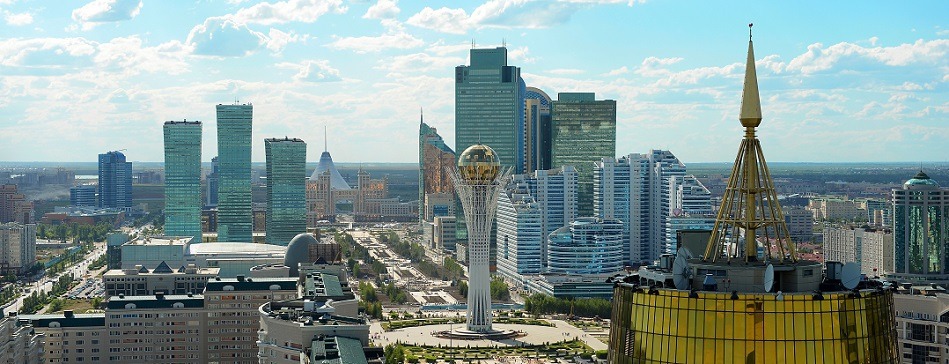Kazakhstan’s President Nursultan Nazarbayev has called the leaders of the Eurasian Economic Union to discuss a project of connecting the Black and Caspian seas by a navigable canal. The cost of constructing the new waterway is estimated at around 18 billion euros. “Another promising project would be the construction of the Eurasia navigable channel, which will link the Black and Caspian Seas through waterways,” Nazarbayev said at the EEU summit in Sochi.
Experts predict significant growth in the demand for freight transportation, in particular for liquid cargoes, between the Caspian region and the ports of southern and central Europe. They also suggest that a significant amount of cargo shipped between the Asian countries and Western Europe can be redirected to the canal as well.
Kazakhi President Nursultan Nazarbayev raised the idea of building a 700 km-long canal between two seas to ease trade between Central Asia and world markets for the first time in 2007.
Such a canal would be 1,000 kilometers shorter than sending goods via Russia's Volga-Don canal network. In addition, the Eurasia canal would be able to pass a lot more cargo than the old waterway - up to 45 million tons per year.
Eurasia canal opens a gate to the World Ocean through the Black Sea and the Bosporus Strait. The new waterway will significantly reduce the time of delivery of goods, including hydrocarbons, from the Caspian Sea to the Black Sea countries and further to Europe.
This channel is especially important for Azerbaijan, Kazakhstan and Turkmenistan, notably in view of possible US sanctions against Iran, territory of which these countries deliver goods to the Persian Gulf.
Kazakhstan, which relies on Russian-controlled export routes for its exports of oil, gas and other goods, needs a range of options for its trade. Of the twenty largest oil producers and 15 oil exporters, Kazakhstan is the only country that does not have access to seas.
The landlocked resource-rich Kazakhstan – keen on attracting foreign direct investment, pursuing deeper integration into the wider global economic networks, and diversifying foreign economic and political relations – is currently positioning itself as a Eurasian Transit Hub, with Eurasia waterway being one of its many other initiatives.
Russia also has an interest in improvement of the waterways between the Caspian basin and that of the Azov and Black Seas due to the increasing volume of cargo traffic between the Volga-Caspian basin and European Union, as well as the inadequacy of existing facilities on the Volga-Don Canal for handling the expected cargo flows.
The Eurasian Economic Union has partly merged with the Beijing’s multi-billion logistic “One Belt, One Road” initiative. Volumes of freight travelling between China and Europe over Kazakhstan and Russia are rising quickly.
Therefore, China may also be interested in this waterway. China Government with a $40 billion Silk Road Fund, aims to invest in an infrastructure network of rail links, high ways, shipping routes and also oil and gas pipelines across the Eurasian continent.
The Eurasia canal would require fewer locks than across Volga-Don route. As the highest point of this route is only 27m above the level of the Sea of Azov and 54 meters above that of the Caspian Sea, it could be constructed within about nine low-rise ship locks.
This compares favourably with the 13 locks of the existing Volga-Don Canal, where ships use nine locks to rise 88 m from the Volga to the canal's highest point, and then four more locks to descend 44 meters to the Don's Tsimlyansk Reservoir.
Moreover, if one compares possible consequences of ecocatastrophes to appear while transporting oil and oil-products by tankers along the Eurasia Canal and Volga-Don Waterway, it is evident that negative influence on the unique natural complex of the Volga river could be much more severe, where it would almost be impossible to localize an oil patch.
The construction and operation of the canal will create a multiplicative effect for the economies of the Caspian states. It will push the development of domestic shipbuilding and other related industries, create more than 200,000 jobs, additional income to budgets and much more.
The proposed Eurasia canal is only one example of the current expanding economic space on the Eurasian continent in general and Central Asian area in particular. This expansion involves projects in the fields of transport, energy, and trade, driving geopolitical changes in the Caspian and Central Asian regions.
The Brussels Times

